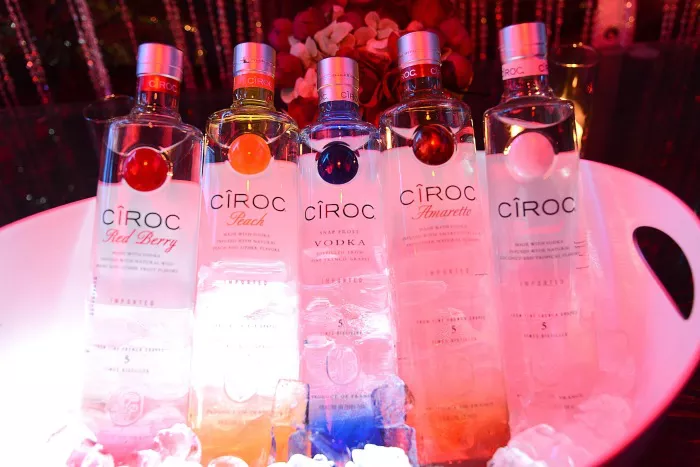In the vibrant landscape of beverages, two terms stand out prominently: mocktail and cocktail. These words evoke images of social gatherings, leisurely evenings, and a myriad of flavors. But what exactly do they entail? Let’s delve into the essence of mocktails and cocktails, exploring their origins, ingredients, cultural significance, and the evolving trends that shape their presence in today’s society.
What is a Mocktail and Cocktail?
At the heart of any discussion about beverages, understanding the fundamental definitions of mocktails and cocktails is essential. A mocktail, a portmanteau of “mock” and “cocktail,” refers to a non-alcoholic drink crafted to replicate the flavors and presentation of traditional cocktails without the inclusion of spirits. On the other hand, a cocktail typically comprises a blend of alcoholic ingredients such as spirits, liqueurs, and mixers, often garnished with fruits, herbs, or spices to enhance its taste and visual appeal.
See Also: Are Martinis Good for Girls?
Origins and Historical Evolution
To comprehend the journey of mocktails and cocktails, we must journey back through history. The concept of mixing drinks dates back centuries, with early civilizations concocting beverages for ceremonial, medicinal, and social purposes. The term “cocktail” itself emerged in the early 19th century in America, initially defined as a mixture of spirits, sugar, water, and bitters. Over time, cocktails evolved into a diverse array of recipes, each reflecting the cultural influences and ingredients of its era.
Mocktails, while a more recent phenomenon, can trace their roots to the temperance movements of the late 19th and early 20th centuries. As societies grappled with the consequences of excessive alcohol consumption, the demand for non-alcoholic alternatives surged. This paved the way for the creation of mocktails, offering patrons the experience of sipping a sophisticated beverage without the intoxicating effects of alcohol.
Ingredients and Crafting Techniques
The art of crafting both mocktails and cocktails lies in the careful selection and combination of ingredients. Cocktails often feature a base spirit, such as vodka, rum, or whiskey, complemented by secondary spirits or liqueurs, mixers like soda or juice, and various flavor enhancers such as syrups, bitters, or herbs.
Mocktails, devoid of alcoholic components, rely on a diverse array of juices, flavored syrups, herbal infusions, and soda to achieve complexity and depth of flavor. Bartenders and mixologists employ similar techniques in the preparation of both mocktails and cocktails, including shaking, stirring, muddling, and layering, to ensure optimal taste and presentation.
Cultural Significance and Social Context
Beyond their culinary attributes, mocktails and cocktails hold significant cultural and social relevance. Cocktails, with their association with sophistication, indulgence, and conviviality, have long been emblematic of social gatherings, celebrations, and nightlife. From the elegant martini to the tropical mai tai, cocktails have transcended borders, becoming symbols of cultural exchange and creativity.
Similarly, mocktails have carved out a niche in the social landscape, offering inclusive options for individuals who abstain from alcohol or prefer lighter alternatives. Mocktail menus have become commonplace in bars, restaurants, and social events, catering to diverse tastes and dietary preferences. Moreover, the rise of health-conscious consumers has spurred the development of mocktails infused with superfoods, herbal remedies, and natural sweeteners, aligning with wellness trends and lifestyle choices.
Emerging Trends and Innovations
As consumer preferences continue to evolve, the world of mocktails and cocktails remains dynamic, with new trends and innovations reshaping the industry. In recent years, there has been a surge in demand for artisanal and craft cocktails, driven by a growing appreciation for premium spirits, locally sourced ingredients, and artisanal craftsmanship.
Simultaneously, the mocktail scene has witnessed a renaissance, fueled by a wave of creativity and experimentation. Bartenders and mixologists are pushing the boundaries of non-alcoholic mixology, incorporating innovative techniques such as molecular gastronomy, smoke infusions, and botanical blends to elevate the mocktail experience.
Furthermore, the rise of mindful drinking movements, coupled with the increasing prevalence of alcohol-free establishments and events, has propelled mocktails into the mainstream. From alcohol-free bars serving a curated selection of zero-proof cocktails to sober-curious initiatives promoting mindful consumption, the landscape of non-alcoholic beverages continues to expand, offering consumers an array of sophisticated and satisfying options.
Conclusion
In conclusion, the world of mocktails and cocktails encompasses a rich tapestry of flavors, traditions, and innovations. From their humble origins to their contemporary manifestations, these beverages reflect the ever-changing palate of society, embracing diversity, creativity, and inclusivity. Whether enjoyed in a bustling cocktail bar or crafted at home with care and precision, mocktails and cocktails continue to captivate and inspire, inviting us to savor the artistry of the mixologist and the pleasure of shared moments.


